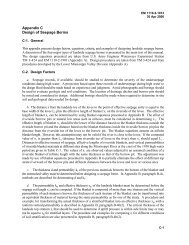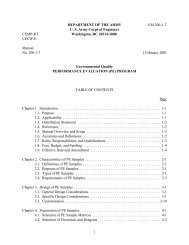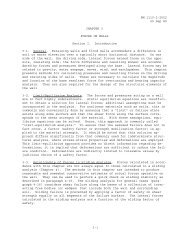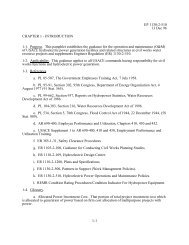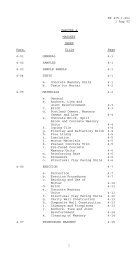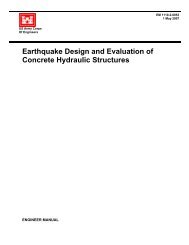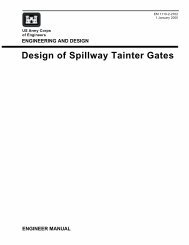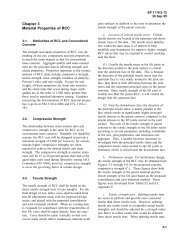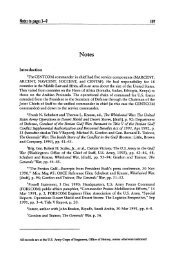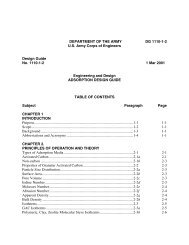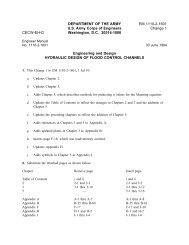Chapter 5 - Publications, US Army Corps of Engineers
Chapter 5 - Publications, US Army Corps of Engineers
Chapter 5 - Publications, US Army Corps of Engineers
Create successful ePaper yourself
Turn your PDF publications into a flip-book with our unique Google optimized e-Paper software.
EM 1110-2-1701<br />
31 Dec 1985<br />
structure, and penstock. Hydraulic losses between the entrance to the<br />
turbine and the draft tube exit are accounted for in the turbine<br />
efficiency.<br />
(2) For projects where the intake is integral with the powerhouse<br />
structure, the losses across the trash racks are the major<br />
consideration. For most planning studies, a trash rack head loss <strong>of</strong><br />
1.0 feet can be assumed. This value is based on a typical entrance<br />
velocity <strong>of</strong> about 5.0 feet per second. For more detailed information<br />
on trash rack losses, reference should be made to the Bureau <strong>of</strong><br />
Reclamation’s Engineering Monograph No. 3 (62).<br />
(3) Steel penstock head losses can be derived using the Scobey<br />
equation:<br />
where: ‘f =<br />
D=<br />
v=<br />
ks =<br />
‘f<br />
~l.g<br />
=ks— D1.l<br />
friction loss in feet per thousand<br />
feet <strong>of</strong> penstock length<br />
penstock diameter in feet<br />
average velocity <strong>of</strong> flow in penstock<br />
in feet per second<br />
a friction loss coefficient<br />
(Eq. 5-6)<br />
The friction loss coefficient k. is a function <strong>of</strong> the rouEhness <strong>of</strong><br />
the penstock wall. For steel p~nstocks, a value <strong>of</strong> 0.34 ;an usually<br />
be assumed for k . Additional information on estimating penstock<br />
losses (includin~ estimating losses for concrete-lined ~wer tunnels)<br />
can be obtained from standard hydraulic design references, including<br />
the Bureau <strong>of</strong> Reclamation$s Engineering Monograph No. 7 (61).<br />
(4) For preliminary studies and for analysis <strong>of</strong> projects with<br />
short penstocks, it is usually satisfactory to use a fixed penstock<br />
head loss, based on the average discharge. For projects with longer<br />
penstocks, it is preferable to use a head loss versus discharge<br />
relationship. Where a fixed value is used, it would be based on the<br />
average daily discharge for a run-<strong>of</strong>-river plant, but for a peaking<br />
project, it should be based on the average discharge when generating.<br />
(5) For Projects with long penstocks, the size <strong>of</strong> the penstock<br />
will have a major impact on project costs, and to minimize costs it is<br />
desirable to minimize penstock diameter. However, smaller penstock<br />
diameters lead to larger losses in potential power benefits due to<br />
penstock friction losses. For projects where penstock costs are<br />
large, it is usually necessary in advanced stages <strong>of</strong> planning to make<br />
an analysis to d~termine the optim~ penstock diameter considering<br />
5-36




